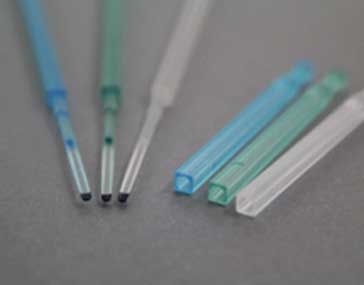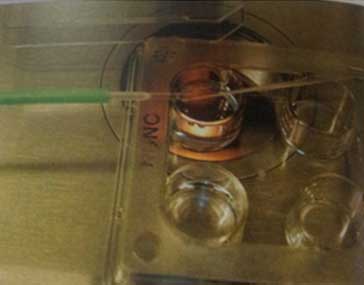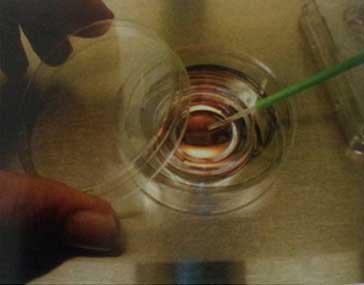Vitrification
- Vitrification can be defined as a physical process by which a highly
- concentrated solution of cryoprotectant solidifies into a glassy vitrified state from the liquid phase by an extreme elevation in the viscosity while cooling at a low temperature.
- The soild which is called glass retains the normal molecular and ionic distribution of liquid state and can be considered to be an extremely viscous super cooled liquid.
- The process avoids intracellular and extracellular ice formation.
- Thus avoids the possible damage which can be caused by intracellular ice formation and the osmotic effects related to extracellular ice formation.
- it also completely avoids ice crystal formation in cryopreserved cells during the thawing process.
- Vitrification of water inside cells can be achieved by :
- Increasing the speed of temperature conduction
- Increasing the concentration of cryoprotectant
Vitrification-cooling


- Take out equilibration media (vial 1) and vitrification media (vial 2) in a petridish
- Label cryoloops with patient's ID No, Name, Date
- Transfer the embryos to be vitrified to the equilibration media and keep alarm for 5 minutes, using the suitable flexi pipette with minimum media
- At the end of 5 minutes,transfer embryos to Vitrification solution and load on to the cryoloop using flexi pipette
- Hold/touch loop over the Vitrification machine till the ice formation occurs
- Insert the loop in the cover and preserved in liquid nitrogen
- Make the entries for location
Vitrification Warming

- Take out patient sheet and locate the embryos
- Take out the warming media in petridish
- Quickly take out the loop from the cover and touch it in the warming
- media and keep the embryos for 3 minutes
- Transfer the embryos into dilution media 1,2,&3 respectively and keep
- for 3 minutes in each using flexi pipette
- Transfer embryos in pre equilibrated culture media
